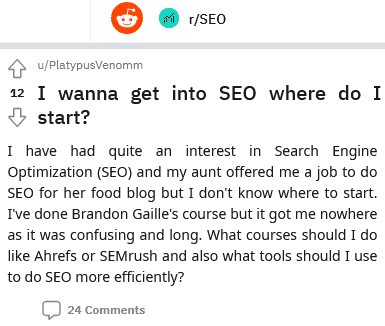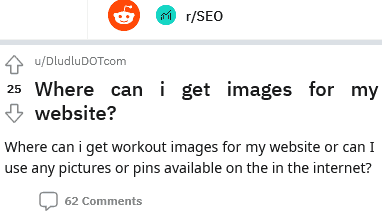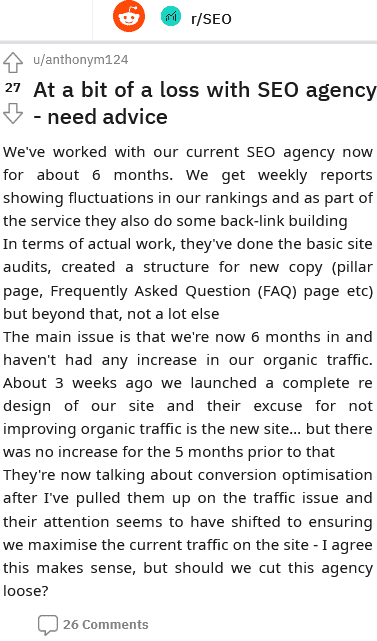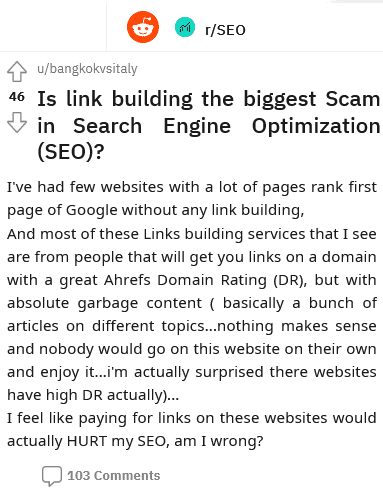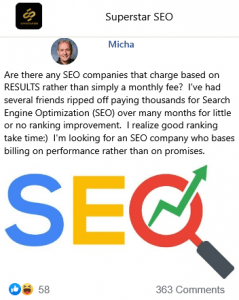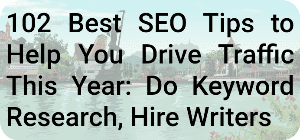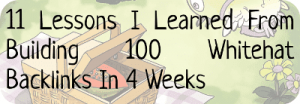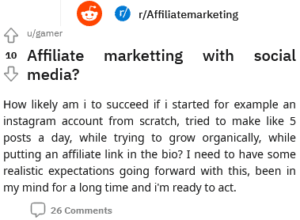Ad Account 1:
imgur.com/a/jQLCcerAd Account 2:
imgur.com/a/KMG14xTSide Note: That may seem like a huge dollar figure to some, but others that's a daily/monthly budget. That said, I'm not bragging or presenting that figure as being HUGE. In fact, last year, I sat next to a guy in Dallas TX who spends $50,000 – $100,000 PER DAY! The rest of those sitting at that same dinner table was spending similar amounts. Okay, onto the lessons!
👨🏫 LESSON 1: A Compelling Offer
This may sound obvious, but you'll be surprised at how many people (including myself) push an offer that the market doesn't want or need. I don't care how seasoned you are at marketing, at the end of the day you can't polish a turd. In other words, if the offer sucks, it's not going to sell! I've even had zero response to offers I gave away for free!
Before you give up on your offer though, make sure that you've done a thorough job at testing (I cover more on testing in Lesson 3 below.) The main thing is to look at how you package your product/service. People must view your offer as having more value than the money their trading for it.
To boost the perceived value you may need to test different price points, and/or add extra bonuses offers that complement the offer. In some cases, it may even mean raising the price because people may decide "it's too good to be true" and conclude it's a scam. Believe me, when I say, people hand that word out like it's candy. Either way, make sure your offer is a no-brainer decision for the audience your targeting.
Another big mistake is creating an offer that is too broad for any specific audience to target. It's a lot more difficult (and expensive) to sell a generic product or service to a broad audience. Instead, get more strategic by creating your offer around a specific niche.
For example: If you sell a workout program it's smart to frame it around mothers who want to lose weight by doing yoga. In Facebook™, you can target moms who also like yoga.
Another niche could be future brides who want to lose 10lbs before their wedding. You could target engaged women who like 'Weight Watchers' or other weight-loss programs that they most likely failed at.
If you offer a sales guide, you can get more niche by framing it around Realtors.
Before creating an offer and kicking off a Facebook™ ad campaign, I'd recommend testing to see if sells or not to your existing email list. If it doesn't sell to people who know, like and trust you then you can bet it won't with ice-cold traffic!
The Bottom Line: If your offer is proven to sell and targets a specific niche audience, the bigger your chances for Facebook™ advertising success.
👨🏫 LESSON 2: Stick To Copy Principles
It's easy to overload your brain with "new and improved" strategies that sell. Truth is, not much has changed since the mid-1900's on Madison Avenue when advertisers were sipping on an Old Fashioned and writing copy. The only difference is the platforms we have to sell on.
For example, Photography has the same core lighting/posing principles whether you shoot with film or digital. Again, the difference is the tools we have available.
The most effective copy strategies that get people to take action the most is fear. Not saying you should scare the hell out of your audience, but instead teach them.
I just paid a guy $150 to do a radon test for a house inspection. I asked him to sell me on why I should do it…his answer? "Because of high levels of radon cause lung cancer." SOLD!
Another way is through urgency and scarcity. That's why I ALWAYS include a deadline to register for a webinar or to take advantage of a deal. Humans procrastinate, and until you give them a reason to pull out their credit card right now they'll have already moved onto something different.
Whenever I feel like I'm trembling away from copy principles, I'll flip on QVC or HSN and watch how they sell. These shows have been selling products the same way for many decades and haven't changed since. It just works!
Another bonus tip is that controversy sells and works well with social media. Dan Kennedy said it best, "If you haven't offended somebody by noon every day, then you're not marketing hard enough." I apply this in most of my Facebook™ ad campaigns and frame it as "us against them".
For example, if you sell design work you could talk about how they should fire their designers. Believe me, the designers will show up in your ads ready to throw rocks. "Okay Brandon, I don't want rocks thrown at me!" – It's a good thing because no publicity is bad publicity. And also, because now it becomes a movement for your buyers to prove to their now-enemies that they stand for what they believe. I mean…how do you think Trump won?
The Bottom Line: Stop falling for the shiny new techniques for selling, and focus solely on the principles of selling that have worked for many decades and more to come! I could write for days on various copy tricks (like how emojis grab attention). More importantly, before flipping on an ad I recommend learning how the consumer thinks with these two books that are packed-full of copywriting principles: 'Cashvertising' by Drew Eric Whitman and 'Expert Secrets' by Russell Brunson.
👨🏫 LESSON 3: Always Be Testing
Failing is an important part of success no matter what you do in life, and it's no different when it comes to Facebook™ advertising.
I CONSTANTLY fail a ton and often times it leaves me scratching my head and wondering if I'm even cut out to be a marketer in the first place 😂 But…I never give up, and no matter how months pass by I keep pushing forward. To put that in perspective, I've spent almost a year on one campaign that's just now starting to convert. That's worse case scenario but enough tweaking and you can truly turn ideas into long-term businesses. That's why I'm willing to spend that much time; because I know it can result in yearly salaries once it's dialed in.
I'm going to break down what's necessary to test, based on my personal experience…
Ad Creatives: The image of the ad is what grabs the attention most, and that's why I recommend a thick red border with a baby crying hysterically…just kidding! It's not necessary to be obnoxiously loud. What's more important is to is an ad that resonates with your audience.
My personal experience has been keeping the ad creatives real and relevant. Ad creatives that work well are collages, amateur-looking (NOT stock photos), testimonials, hyper-speed videos. Turn images b&w and they may perform better too.
Ad creatives constantly burn out, and do so weekly! NEVER be afraid to add new ones. I've made the mistake of getting emotionally attached to an ad image because it WAS performing but fizzled out. I kept trying different audiences and copy and wasted so much money. Now I'm constantly testing new images/videos and always finding new winners. Pretty exciting stuff and a big hurdle I had to overcome.
The Landing Page: This goes hand to hand with the ad itself. When someone clicks on your ad, they want to feel confident that the landing page matches what the ad states. Otherwise, it's called 'bait and switch' when they land on your page. If you invited them to a webinar in your ad, it must take them to a webinar registration page. If you offer a product in your ad, it must take them to a sales page for that specific offer. If there's any disconnection (words, imagery…etc.) then this is going to put a huge dent in your conversion rate.
I've read many split-testing books and here's what I've personally found to be the most effective on sales pages:
a.) The Headline: The headline sets the tone for the entire page. When someone reads the headline they should know exactly know what pain points they have, what your offering, and how your offer will benefit them. You'd be surprised at how many sales pages I've seen that I've reached the bottom of the page and still have no idea what they're offering. So be clear about that!
b.) The Price Point: Once I have the headline dialed in, I focus on the price. When I'm sending traffic to an offer I like to keep it under $50 so I try to make sure the value exceeds that cost.
I'll split test prices at: $47, $37, $27, and $17. If it doesn't sell at those price points I'll even go down as low as $7.
A recent campaign I did just this, and as soon as I did that it started to sell. I'm averaging $9.38 Cost Per Action (CPA)'s (cost per action) which means I'm only losing $2.38 per sale which can easily be made up on the backend. I call that a success!
Side note: I put a lot of hours into thinking, creating, and marketing this product, but I don't allow emotion to get involved when it comes to reducing the price of my product. I'd rather have a product that sells 10x as much at $7 than not sell at all at $17. All I care is about being profitable so I can scale to the moon.
Also when it comes to pricing, don't give them too many options to choose from. Too many choices result in no choice at all.
If you're driving an immense amount of traffic then I recommend testing other things, like moving different sections around, button text, button color but personally I haven't seen much of an effect by testing this.
The Bottom Line: Test ad creatives, headlines, and price points.
👨🏫 LESSON 4: Avoid Overlapping
This is more on the tech side of ads, but when advertising you should have an ad that shows to a cold audience ONCE. Then set up a separate ad that retargets those who clicked but didn't' buy.
If you neglect this, you run the risk of what's called: Overlapping. This will depend on your audience size, and your daily budget. However, when overlapping occurs you're essentially showing the same ads to the same audience which may cause ad spend to hike because you're competing with yourself. It could also prevent your ads from spending at all.
The Bottom line: Avoid overlapping by excluding people who've visited your landing page and people who purchased from your cold traffic.
👨🏫 LESSON 5: Follow Up (Advertising Is Just The Beginning)
Some advertisers collect leads by giving away freebies like eBooks, cheat sheets…etc. Instead, I choose to send traffic directly to an offer (under $50) or send them to a webinar registration page. The reason is it sets the tone that indeed I have an offer and that I am NOT a charity for freebie-seekers.
Once you have a buyer, they're more inclined to buy more. Whether you're profitable, break-even, or in the red with your Facebook™ ad campaign you can scale even more by up-selling, or cross-selling through email marketing.
I try to email my buyers every day and it's proven to be profitable. I've also created businesses within my business by partnering with people and selling their product, as well as adding a phone salesman to sell higher priced offers.
The Bottom line: View Facebook™ advertising as only the beginning, because the money is in the back-end of your business.
👨🏫 LESSON 6: Have An End Date
Most advertisers (including me) want to flip an ad on and just let it keep going. That used to work in the earlier days but now it's about scheduling an end date on your ad set because of 2 reasons…
1.) It forces Facebook's™ algo to optimize faster and find similar people that resonate with your ad.
2.) It adds urgency which gets people to take action!
I'll notice with my campaigns 33% of sales will come in the last day during a week long campaign.
The Bottom Line: Facebook™ algo optimizes more effectively when you schedule an end date at the ad set level. Also people take action when there's an end date.
👨🏫 LESSON 7: Mix In Other Ad Platforms
A lot of my Facebook™ advertising success comes from integrating other ad platforms. My 2 favorites are YouTube, and Perfect Audience and use both for retargeting purposes.
When someone lands on my sales page and leaves without taking action I'll stock them as they surf the web.
Creepy? Absolutely. Profitable? Yes, here's a Y.T.D. screenshot of a YouTube campaign I'm currently running: imgur.com/a/lzQbehd
When someone visits YouTube after they leave my sales page without buying, a video ad of me teaching/pitching will play before their video (they can skip it of course!)
Perfect Audience allows me to put banner ads on websites they visit after they leave without buying.
Bottom Line: Retarget your Facebook traffic using other ad platforms.
Bonus Lesson 8: Get Your Rewards!
If you find yourself spending big on Facebook™, get a business credit card of some sort that will offer cashback or travel rewards.
That was a mistake I made all throughout < year >. Now I have the U.S. Bank Edge Select card attached to my ads account which earns me 3 points per $1 spent on Facebook™ advertising. I set it and forget it, and then by the time I remember I have around $2k – $3k in cash rewards that pay for one hell of a vacation 🙂
Someone Felt Like Google Is Relegating Products and Services Which Need PPC or Paid Ads and Only Choosing to Organically Rank Advice or Info Content
Paid Backlinks versus Fb Ads for Affiliate Sites to Drive the Traffic
I Suggested My Friend Buy Backlinks. He Ignores That, He Plans to Stick With Paying for Ads for Traffic
ROI of SEO Marketing gets Lower, and Google is looking Tired to Index New Entry Pages, so Should We Buy Some Ads?
The 7 Fatal Mistakes an Entrepreneur Will Face
